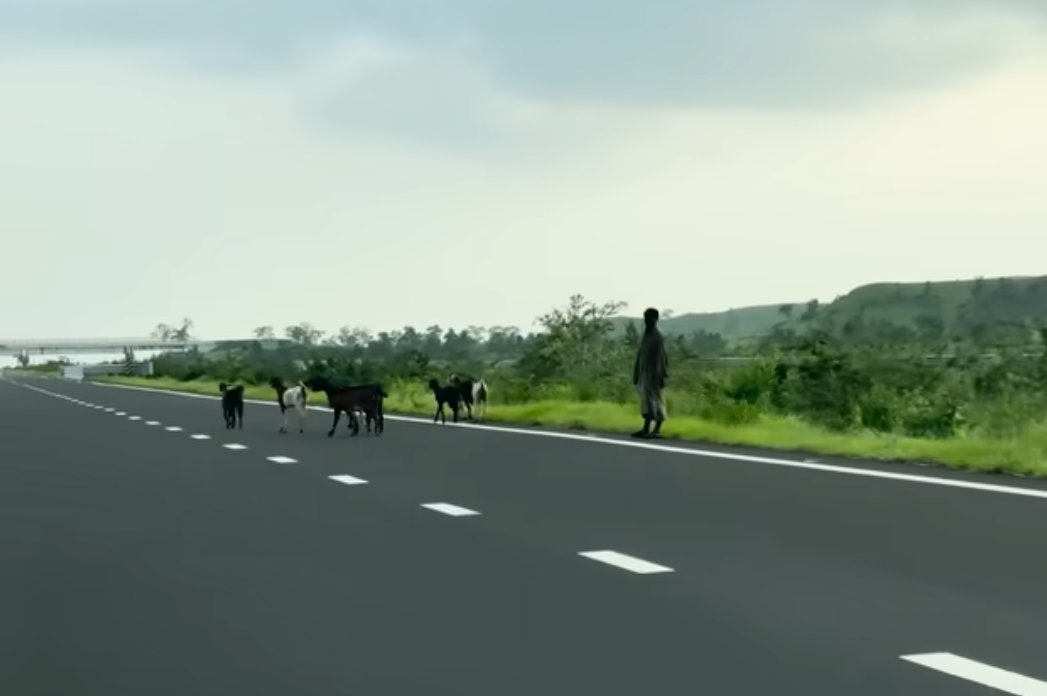Two-wheelers, stray animals, trespassers find their way onto Delhi-Mumbai Expressway
July 28, 2025
Ratlam: Construction of the over 1,350‑km long, eight‑lane Delhi–Mumbai Expressway is underway, with most of the stretch connecting Madhya Pradesh to Delhi already operational. The Madhya Pradesh segment begins from Jhabua district on the Gujarat border, passes through Ratlam, and then continues into Rajasthan towards Delhi.
However, the Vadodara to Dahod section, which ends near the Gujarat–Madhya Pradesh border, is still pending and yet to become operational. Local newspapers have reported several issues emerging on the operational sections of the Delhi–Mumbai Expressway. These include the entry of two‑wheelers, illegal cuts made in safety barriers, and the presence of stray animals on what is supposed to be a fully access‑controlled, high‑speed corridor.
According to a vlog by a local reporter who travelled a 70‑km stretch from Ratlam to the Timbarwani interchange in Jhabua district, major loopholes have emerged on the expressway that need urgent attention from the NHAI.
As per official rules, two‑wheelers, three‑wheelers, agricultural and construction vehicles are not allowed on the expressway. Yet on this route, many local motorists were seen riding two‑wheelers, and some people were even using bicycles to travel on the expressway.
The question arises: how are these vehicles accessing an expressway built to be fully access‑controlled? The answer, as seen in the visuals, lies in the safety barriers themselves — which have been illegally cut at several places. According to the report, there were around 18 such illegal cuts on the 70‑km stretch surveyed.
Similarly, there has been constant movement of sheep, goats, and cattle on the expressway, likely using the same illegal openings, creating dangerous situations for motorists and animals alike.
At its worst, the local reporter even found two empty beer bottles left in the middle of a lane on the expressway. Given the high‑speed nature of the corridor, such negligence from local residents could easily lead to a catastrophic accident.
It’s also notable that expressways and highways are usually built on embankments higher than the surrounding ground level, making them harder to access illegally. But in some areas of this stretch, the elevation isn’t sufficient. Additionally, nearby villages are at similar or even higher elevations, which makes it easier for the largely tribal local population to wander onto the expressway — sometimes without fully understanding its access‑controlled nature.
Now, questions are being raised about the vigilance and monitoring by NHAI officials, including whether regular inspections are being carried out and why such major loopholes remain unaddressed — posing serious risks for future accidents. DeshGujarat
Recent Stories
- India vs SL Match
- Free rides on AMTS buses for three days during Diwali
- 100 years of service to nation was our duty, so no celebration is needed: RSS Chief
- Commonwealth Sport Board Recommends Ahmedabad as Host City for 2030 Commonwealth Games
- Gujarat CM to visit Mumbai for listing of SMC's green municipal bonds on NSE



